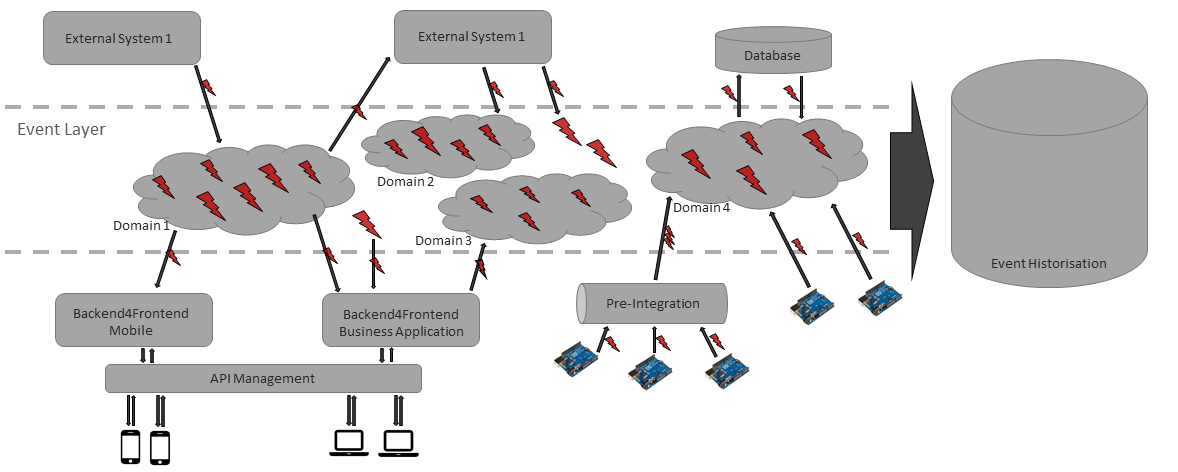The Power of Events - IoT, Big Data and Machine Learning used in Combination
The book “The Power of Events: An Introduction to Complex Event Processing in Distributed Enterprise Systems” by David Luckham is a great start to understand concepts about events, event processing and event driven architectures. I read the book during my studies. The lessons are becoming more and more important.
Basically, an event is a piece of data that represents some change, which can be in the real or the digital world.
IoT is about recognizing events in the real world, which allows triggering process or let us gain deeper insights into our businesses. IoT devices can be controlled remotely. Moreover, they can interact with our environment which results in a fully different understanding of automation. With the help of Big Data, events can be stored for later analysis. Machine Learning provides functionality to detect patterns in data. Additionally, Machine Learning algorithms can be trained with Big Data to detect patterns in event streams.

In integration as the foundation for digitization I introduced the digital integration hub, which is also shown above.
Let us have a look at the following scenario, which addresses public transportation via trams.
A mobile app in the scenario can be aligned to the lower part of the image, where a backend for frontend is used, to optimize and store data for a mobile application. The backend for frontend exposes data via an API that is secured by an API management layer. The API is published to be used by our mobile app.
Tracking of trams is achieved via an IoT Cloud, which can be understood as a pre-integration stage. The trams send their position regularly as well as specific events like arrivals or departures; but also the usage of an emergency brake. Via Fast Data streaming technology users of the mobile app are informed of variances from the time table. Additionally, Machine Learning is used to predict delays with a high probability.
Timetables and trams are related via a planing software. Moreover, trams are managed via an enterprise resource planing tool; based on the events containing information about covered distances and usage time maintenance cycles are optimized.
At least, all communicated data in form of events is stored in the historization block. No event is lost. A first thought might be that this data is great for timetable optimization, which is surely true. Moreover, your could think about playback scenarios to clarify accidents or even use this data for the training of tram drivers.
To sum up:
- Only the combination of IoT and events, Machine Learning and Big Data principles unfold the full potential of digitization scenarios. One technology for its own provides benefits, but the combination is truly powerful.
- Digitization is about automation. Event recognition and backing data allow to start automated processes. This automated processes make it possible to create new user experiences - like informing people about delays.
- Mobile phones allow human beings to access and interact with the digital world. They are links to digital representations of our world.